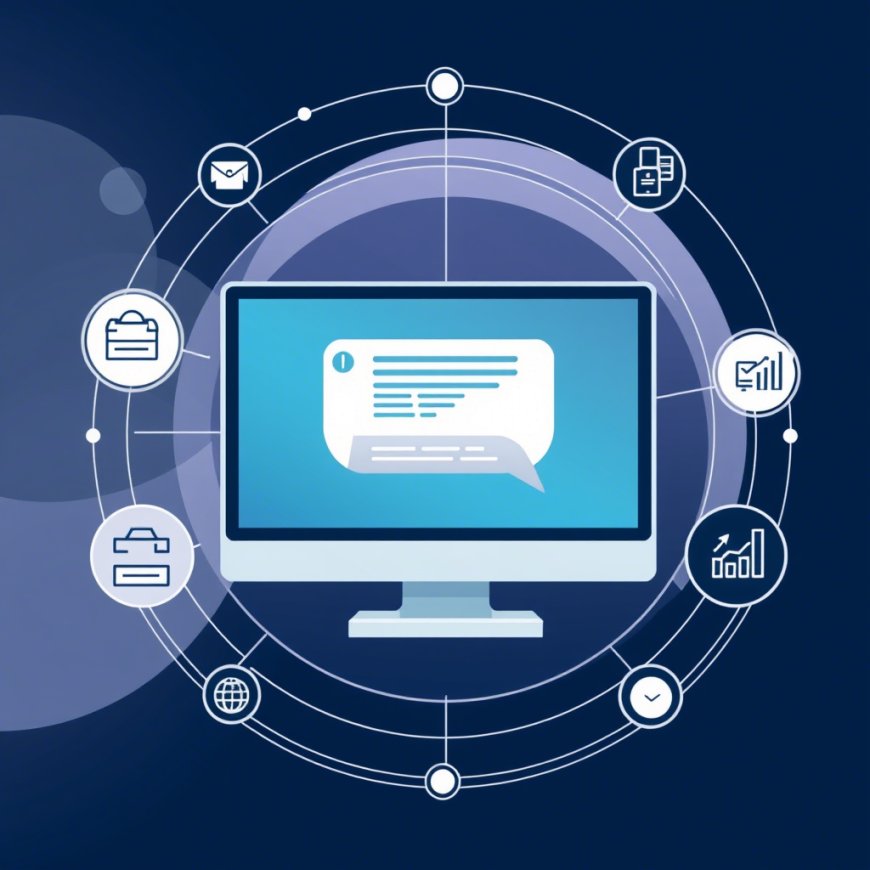The Role of Chatbots in Business Automation
Discover how AI chatbots are transforming business automation in 2023. Boost efficiency, cut costs, and enhance customer experiences with actionable insights and trends.

Introduction
Gone are the days of waiting on hold or juggling endless emails. In 2023, chatbots are the silent workhorses of business automation, handling everything from customer queries to payroll reminders—while humans focus on strategy. Powered by AI and natural language processing (NLP), chatbots now drive 30% faster response times and reduce operational costs by up to 40% (Gartner, 2023). Whether you’re a startup or an enterprise, here’s why chatbots are no longer optional.
What Are Chatbots (and Why Do They Matter)?
Chatbots are AI-driven software programs that simulate human conversations via text or voice. Modern chatbots go beyond scripted replies, leveraging machine learning to:
-
Understand context and sentiment.
-
Integrate with CRM, email, and payment systems.
-
Learn from interactions to improve over time.
Key Trend: 67% of consumers prefer chatbots for instant resolutions (Drift, 2023).
5 Ways Chatbots Supercharge Business Automation
1. 24/7 Customer Support
-
Solve queries instantly: Track orders, reset passwords, or book appointments without human intervention.
-
Tools like Intercom or Zendesk auto-route complex issues to live agents.
-
Example: Sephora’s chatbot handles 70% of routine queries, freeing staff for high-value tasks.
2. Lead Generation & Sales
-
Qualify leads via interactive quizzes or FAQs.
-
Personalized recommendations: Chatbots analyze browsing history to suggest products (e.g., Shopify’s Kit).
-
Book demos or upsell: Drift’s chatbots schedule meetings and share pricing plans.
3. Streamline Internal Operations
-
HR automation: Onboard new hires, submit leave requests, or answer policy questions (e.g., Workday’s chatbot).
-
IT support: Reset passwords, troubleshoot software, or log tickets (ServiceNow).
4. Multilingual & Omnichannel Support
-
Engage customers on WhatsApp, Facebook Messenger, or SMS with tools like ManyChat.
-
Travel giant KLM uses chatbots to send flight updates in 13 languages.
5. Data Collection & Feedback Analysis
-
Conduct post-purchase surveys or NPS polls.
-
Sentiment analysis: Tools like Dialogflow detect frustration and escalate issues.
2023’s Must-Know Chatbot Trends
-
Voice-Enabled Chatbots
-
Devices like Alexa and Google Home integrate with business systems for hands-free support.
-
-
Predictive AI
-
Anticipate needs (e.g., a banking chatbot nudging users to save based on spending habits).
-
-
Emotional Intelligence (EQ)
-
Tools like Replika detect tone and adjust responses to defuse angry customers.
-
-
Chatbots for B2B
-
Automate RFPs, invoice tracking, and contract reviews (e.g., Clari for sales teams).
-
Industries Winning with Chatbots
-
Healthcare: Babylon Health’s chatbot triages symptoms and books doctor appointments.
-
E-commerce: H&M’s chatbot styles outfits based on user preferences.
-
Banking: Bank of America’s Erica handles balance checks and fraud alerts.
How to Implement Chatbots Successfully
-
Define Goals: Start with one use case (e.g., FAQs or lead gen).
-
Choose the Right Platform:
-
Startups: Tidio (no-code, affordable).
-
Enterprises: IBM Watson (advanced NLP and security).
-
-
Design Conversational Flows: Keep interactions natural and concise.
-
Test & Optimize: Use analytics to refine responses and reduce drop-offs.
Pitfalls to Avoid
-
Over-Automation: Keep humans in the loop for sensitive issues (e.g., complaints).
-
Ignoring Mobile Users: 80% of chatbot interactions happen on mobile—optimize accordingly.
-
Generic Scripts: Personalize greetings and recommendations using CRM data.
Case Study: Domino’s Pizza
Domino’s chatbot “Dom” handles 60% of orders via voice or text. Customers can track deliveries, reorder favorites, or get coupons, driving a 20% increase in repeat sales.
Conclusion
Chatbots are the ultimate multitaskers in business automation, blending efficiency with empathy to meet modern customer and employee expectations. From cutting costs to scaling support, their ROI is undeniable. Ready to automate? Begin with a pilot—your team (and bottom line) will thank you.
What's Your Reaction?
 Like
0
Like
0
 Dislike
0
Dislike
0
 Love
0
Love
0
 Funny
0
Funny
0
 Angry
0
Angry
0
 Sad
0
Sad
0
 Wow
0
Wow
0






































